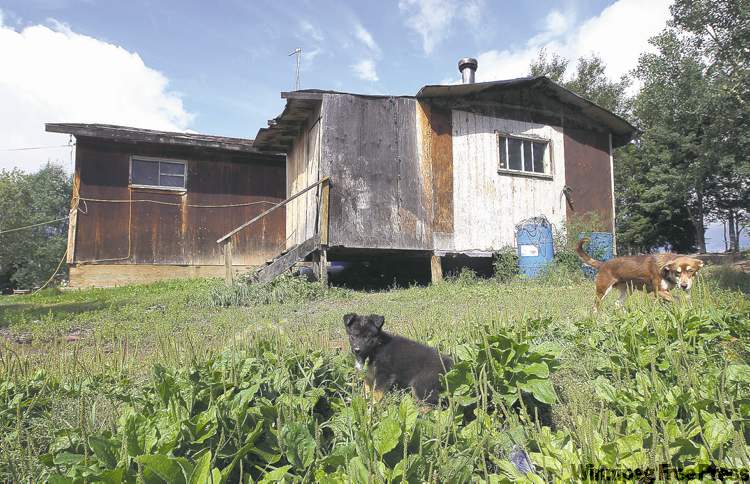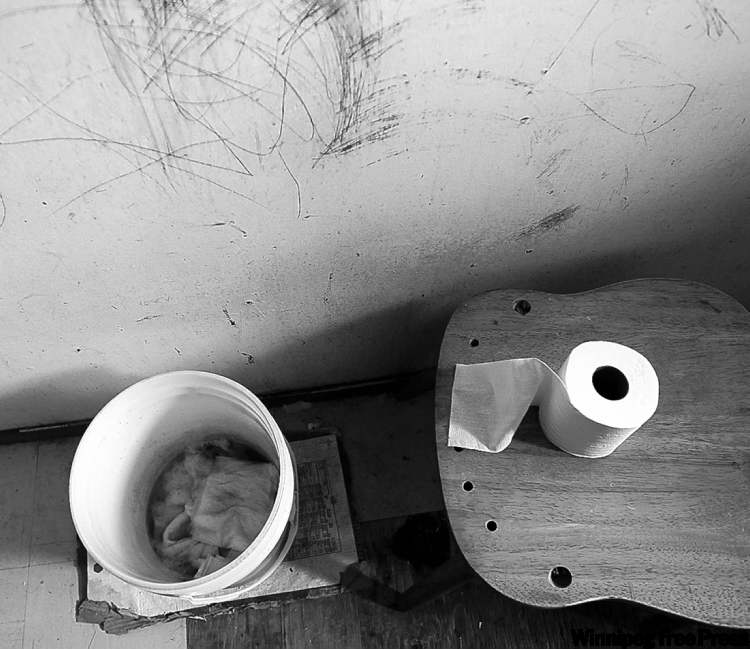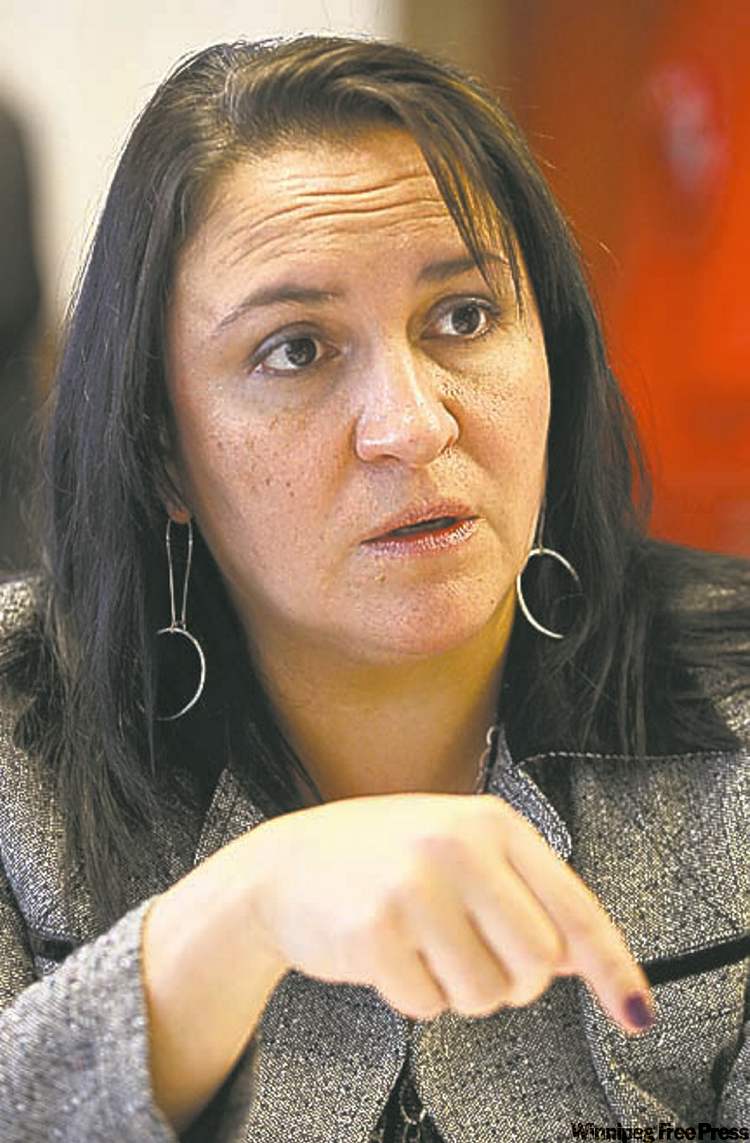The waiting game
No real solution in sight for 1,400 reserve residents living without running water
Advertisement
Read this article for free:
or
Already have an account? Log in here »
To continue reading, please subscribe:
Monthly Digital Subscription
$0 for the first 4 weeks*
- Enjoy unlimited reading on winnipegfreepress.com
- Read the E-Edition, our digital replica newspaper
- Access News Break, our award-winning app
- Play interactive puzzles
*No charge for 4 weeks then price increases to the regular rate of $19.00 plus GST every four weeks. Offer available to new and qualified returning subscribers only. Cancel any time.
Monthly Digital Subscription
$4.75/week*
- Enjoy unlimited reading on winnipegfreepress.com
- Read the E-Edition, our digital replica newspaper
- Access News Break, our award-winning app
- Play interactive puzzles
*Billed as $19 plus GST every four weeks. Cancel any time.
To continue reading, please subscribe:
Add Free Press access to your Brandon Sun subscription for only an additional
$1 for the first 4 weeks*
*Your next subscription payment will increase by $1.00 and you will be charged $16.99 plus GST for four weeks. After four weeks, your payment will increase to $23.99 plus GST every four weeks.
Read unlimited articles for free today:
or
Already have an account? Log in here »
Hey there, time traveller!
This article was published 05/11/2011 (5152 days ago), so information in it may no longer be current.
For the last year, the Winnipeg Free Press has tried to get answers to two simple questions: When will 1,400 First Nations homes without indoor plumbing get it? How much will it cost?
There has been no clear commitment from Ottawa to provide running water to every Manitoban. Here’s the state of affairs.
The to-do list

Retrofit homes
Most of the 1,400 homes in Manitoba without running water also don’t have real bathrooms with sinks and tubs and toilets, and sometimes the electrical systems aren’t strong enough to run a modern hot water tank. Retrofitting homes costs between $30,000 and $40,000 each — assuming the home is worth saving. The hitch is, there is rarely extra cash to build or renovate houses on reserves. Bands are expected to find the money from small pots of discretionary capital funds doled out yearly by Ottawa that the bands can use as they see fit. Often there are more pressing needs on reserves. For example, St. Theresa Point gets about $2 million a year in what’s called band-based funding — that’s about $750 per resident. But it’s often spent on dozens of other pressing small-scale capital projects on reserve, such as buying a new fire truck. In a good year, a dozen or maybe 15 homes might get built or renovated, a drop in the proverbial slop pail.
Install pipes
This is a two-pronged problem — the main lines and the hookups. In Island Lake, there are vast sections of the four reserves with no water or sewer mains, and installing them is expensive because it often requires blasting through bedrock. It makes sense if there’s enough density, but if homes are spread out, more pipes become cost-prohibitive. Then, there’s the hookups, the short stretches of pipe that connect the main line to each home. Many Island Lake residents know the water and sewer mains are mere metres from their front door, but can’t afford the $5,000 or more to get hooked up.
Install cisterns
This is a workable solution — installing huge water tanks underneath a home or in a heated lean-to. Those cisterns are filled weekly by a water truck and pump water into the home for use. Sewage is stored in holding tanks until the sewage truck pays a visit. But cisterns are more troublesome than pipes. They need to be cleaned or the water gets contaminated. Often residents are at the mercy of water trucks that break down, get stuck on muddy roads or just have too many homes to visit. But cisterns are far, far cheaper than pipes and would be a dramatic improvement for many homes.
More water and sewer trucks
Most Island Lake communities have two or three sewage and water trucks — not enough now, and certainly not enough if more homes get cisterns. And, the trucks need heated storage sheds or the winter cold ruins them.
Train and fund staff
That includes staff to operate and monitor water and sewage treatment plants, clean cisterns and retrofit homes to add indoor plumbing.
What happened in the last year
Things inched forward, one slop pail and one house at a time.
Late last year, the Island Lake bands asked Ottawa for $8 million in emergency funds to buy new water and sewer trucks, distribute new slop pails and build campground-style communal showers and central laundry facilities. They were hoping the cash would be in place in time for the winter road season so supplies could be trucked into the reserves and construction could happen over the summer.
Instead, the bands got $1 million for new slop pails and a new water and sewer truck each. Some band members were grateful for the new pails, but others felt they added insult to injury.
Anna Fontaine, Aboriginal Affairs and Northern Development Canada’s regional director for Manitoba, said some of the chiefs wanted to hold off on the concept of central laundries and showers.
“It’s certainly not off the table if that was an option that was feasible and if the chiefs supported it for their community,” she said.
What did happen over the summer is a handful of houses got retrofitted for indoor plumbing. St. Theresa Point was among the most productive, with 29 new or renovated homes connected to the main water and sewer lines or to cisterns. That’s fewer than 10 per cent of reserve homes with no modern sanitation, but it’s a start.
Also last year, Wasagamack made progress on one creative solution to on-reserve water woes. In Island Lake, many houses are very spread out, meaning it’s prohibitively expensive to blast through bedrock to install hundreds of meters of pipe to service a handful of homes. What makes more sense, to solve the water and the overcrowding crisis, is building multi-family apartments closer to the centre of the reserve where pipes are already in the ground.
Thanks to $750,000 in federal economic stimulus money, that’s what Wasagamack did over the summer, building a six-plex.
Trouble is, that stimulus money dried up. The program is over and not likely to get renewed given Ottawa’s deficit-reduction plan, meaning extra cash for similar housing projects will be hard to come by.
What’s coming up this year

It all hinges on a big report underway by the Island Lake Tribal Council.
Former Wasgamack chief Jerry Knott has been asked to do an inventory of all 1,500 homes in Island Lake to find out which could reasonably be connected to water and sewer mains, which might best be served by a cistern and which need interior renovations to install toilets and tubs. It should be the definitive report on the cost and scope of the running water crisis.
The report is about half done, but Aboriginal Affairs is eagerly waiting for it in order to start planning what work could reasonably be done next summer and how to make the most of what little federal funding exists. The winter road season, which normally starts mid-February, kicks off a frenzy of trucked-in deliveries. The bands and Aboriginal Affairs need the report in order to start work on its to-do list.
“Winter road season is fast approaching us, and we need a good plan in place,” said Fontaine.
Short term
Northern Grand Chief David Harper believes $66 million should be enough to provide all 800-plus homes in Island Lake with indoor plumbing.
It’s an admittedly rough estimate — federal Aboriginal Affairs staff thinks it’s even a little liberal, and the door-to-door assessment underway by the tribal council will likely refine the number.
But Harper says it includes new water and sewer trucks and heated garages to store them in, indoor renovations so every home has proper bathrooms and kitchen sinks and the installation of cisterns.
It doesn’t include pipes, and Harper admits it’s not ideal. But it’s the quickest and cheapest way to get indoor plumbing to those who need it. With the right commitment from the federal and provincial governments, it’s possible the problem could be solved in two years.
But many see cisterns as a second-rate solution.
“That generally doesn’t fly with me,” Wasagamack Chief Alex McDougall said of the cisterns idea.
Cisterns need regular cleaning or they get contaminated by bacteria that can be as unhealthy as drinking lake water. Ottawa provides bands with funding to hire cistern maintenance staff, but those funds are often redeployed to more pressing needs in communities strapped for cash.
And, the cisterns still require water trucks, the operation of which Ottawa only funds at 80 per cent and which often break down or simply can’t realistically visit every home that needs water.
Long term
There’s a fair amount of work planned for the next three to five years in Island Lake and several other reserves with running-water woes. But it’s nowhere near enough, and even federal Aboriginal Affairs staff admit with some chagrin it won’t come close to ensuring all of the 1,400 homes without modern plumbing get it.
So far, over the last five years, Ottawa has spent $227 million on water-and-waste projects in Manitoba — no small potatoes.
In Island Lake alone, each of the four reserves is slated to get another multimillion-dollar capital infusion over the next three years. At least, that’s the plan. It’s all contingent on budget allocations in a time of federal financial restraint, cautioned Fontaine.
The reserves each have fairly well-functioning treatment plants (except Wasagamack’s sewage treatment plant, which was recently rated “high risk” by federal consultants). What they need are more pipes that stretch further into the community, and that’s what they’re likely to get. The trouble is, Aboriginal Affairs won’t say how much money will be allocated to each community, how many homes the pipes might serve and how much closer the cash infusion will get to solving the problem once and for all. In Wasagamack, for example, McDougall hopes another stretch of pipes could serve at least 100 homes, but it’s only a hope at this point.
Those decisions will be made in consultation with each First Nation over the next couple of years and will likely require another round of feasibility studies. Aboriginal Affairs will see where it makes sense to build pipes — to existing homes or to a new subdivision — and where cisterns and sewage holding tanks will do.
“That’s our plan,” said Fontaine.
“Where we can, distribution. Wherever we can’t, trucked water and sewer.”
Then, there’s the issue of home renovations, which is somewhat of an orphan issue. Aboriginal Affairs doesn’t build or renovate houses. Instead, it gives each band annual capital allocations to spend on smaller projects as the chief and council see fit. Money to build bathrooms or retrofit homes must come from that.
But that cash is stretched so thin it can’t possibly meet all the needs, say many chiefs. In St. Theresa Point, for example, even if the band spent every penny of its capital money on home retrofits, it would still take five to seven years to bring indoor plumbing to all 300 homes that need it.
Often, as is the case in some parts of Garden Hill, Ottawa pays to install the pipes, but it takes the band several years to cobble together enough money to renovate a home and hook it up to the main line.
Fontaine said she’s doing the best she can with the federal cash available.
“If we don’t get targeted housing money, if we don’t get a significant infusion (for water and sewer), it is a challenge,” she said. “We have to plan for it with the budgets available to us.”
There’s an added financial wrinkle. A new report released over the summer found that 27 water and sewage treatment plants on reserves in Manitoba were rated “high risk.” That means they threatened to dump untreated sewage into lakes and rivers or the drinking water they produced failed to meet national protocols and risked the health of residents.
The report suggests it would cost $82 million to bring the systems in Manitoba up to snuff, and Fontaine says her department plans to start work on nine of the high-risk water treatment plants in the next five years. That will eat into the capital cash earmarked for major projects.
The report suggests a whopping grand total of $690 million is needed over the next decade for new plants and new pipes on reserve.
Long, long term
Lastly, there’s the question of the $1.4 billion, all-weather road. Many First Nations leaders believe, given the tedious pace of change, the real key to fixing the problem of running water is the construction of an all-weather road linking Island Lake to Thompson or Winnipeg all year round. That would allow bands far more flexibility to install pipes, renovate homes and keep treatment plants running. As it is, an entire year’s supply of construction materials must be trucked in on the winter road, which is only open for a month or six weeks every year. It’s a logistical nightmare, and Ottawa’s capital budget payouts are rarely timed to match the winter road season. A building project that takes a summer in Winnipeg often takes twice as long in Island Lake.
But the all-weather road could be 30 years away, leaving yet another generation to grow up in Third World conditions.
The province has already started work on the first, southern stretch of the road and says completion could be sped up with a huge infusion of federal cash. That makes sense since most of the communities served by an east-side road are reserves under federal jurisdiction.
So far, though, there’s been no formal commitment from Ottawa to help fund the road.
maryagnes.welch@freepress.mb.ca
History
Updated on Saturday, November 5, 2011 3:47 PM CDT: formats text, adds photos, adds fact box



